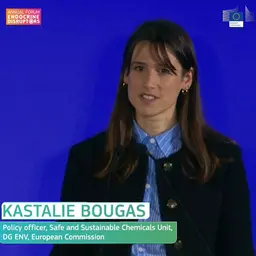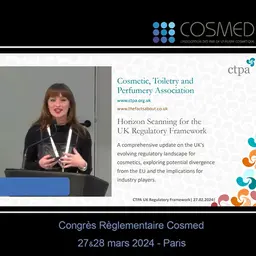
Today, the notion of high skin sensitivity in adults is well-known, but in children, no study had demonstrated it so far. Out of almost 700,000 publications in the scientific literature on this type of epidermis, not a single one focuses on babies’ skin. And yet, more and more parents go see a dermatologist for very specific skin problems. And Mustela has unveiled the results of their latest study, which provides evidence of the existence of this type of epidermis in babies and children.
Gaëlle Bellemere, Head of Innovation, Life Science & Scientific Communication at Laboratoire Expanscience, and Clarence de Belilovsky, Dermatologist and member of the Mustela Expert Circle, presented the study results.
So far, three skin types were acknowledged in children and identifiable to the naked eye by their parents.
Normal skins: they are characterized by their smooth, soft aspect and even colour, but they still require daily hydration.
Dry skins: they can be detected thanks to their light desquamation. The epidermis feels a little rough and may peel. Usually, these phenomena occur in winter, due to a lipid barrier deficiency.
Atopic skins: the scales are highly visible, because the epidermis is extremely dry. There can also be deep red eczema bursts. Causes are rarely identified.
Nevertheless, Clarence de Belilovsky explains that this canonical classification is now shaken up by the characterization of a new skin type ‘increasingly observed in children. It seemed necessary to prove its existence in order to best treat suffering babies. From now on, we need to consider there are four skin types,’ she specifies.
Study design
Gaëlle Bellemere partnered with Professor Misery, Director of the Dermatology Centre of Brest, Brittany, to launch a global epidemiological study. What for? To search for the existence and signs of this epidermis. The panel covered five countries and gathered almost 8,000 babies and children, in collaboration with 420 paediatricians. Researchers aimed to measure the prevalence of very sensitive skins, and also identify clinical signs and triggering factors.
Parents had to talk for their kids. It is important to understand that this skin syndrome is declarative, which means it is usually the subject himself that declares his skin is sensitive. Doctors can detect redness and skin dryness, but without really being sure it is the mark of a sensitivity syndrome. Consequently, researchers’ work was based on the need to be able to demonstrate that what parents said resulted from a biological reality observed on the skin. To this aim, they set up an evaluation questionnaire to be filled in by parents, with the help of paediatricians. Then, two groups were formed according to the babies’ skin types: normal and sensitive skins.
Based on this distribution, the study’s very architecture relied on the comparison between two different skin types. Gaëlle Bellemere explains they ‘measured visible clinical signs, like redness and skin dryness, but also tried to document invisible signs such as stinging and tightness, which show the baby is uncomfortable with his own skin. Lastly, we tried to determine whether, biologically, this sensitive skin was any different from a normal skin, because that is what is important to best design the products intended to take care of these epidermises.’
The duration, intensity, and frequency of these signs were measured. Researchers realized sensitive skins presented these epidermal troubles much more often, and for a longer period of time.
The last testing phase was dedicated to highlighting the existence of factors triggering the skin hypersensitization process. Gaëlle Bellemere asserts that ‘there are actually internal reasons that make the skin react. These skin inflammation markers are higher for sensitive skins than normal ones.’
Highly sensitive skins: how to recognize and take care of them
Highly sensitive skins in children are characterized by a lower tolerance level and an abnormal reaction to the usually well-tolerated daily aggressions and external stress sources. These factors trigger redness, stinging, and other skin discomfort.
Clarence de Belilovsky indicates that ‘triggering factors may be related to climate conditions like the wind, cold, or heat. But chemical factors are also responsible for these troubles. On top of the list are hard water, the presence of detergents in washing powder, and the contact between the father’s beard and his baby’s skin.’
How to take care of them
Clarence de Belilovsky explains that ‘due to the presence of mechanic triggering factors, it is essential to apply products that easily penetrate the skin, do not need to be massaged in for hours, and are easily rinsed off. Cosmetics should offer perfect affinity with the skin. Such a delicate epidermis requires skincare that guarantees optimum tolerance to limit these neurogenic inflammations inducing redness.’
Thanks to this breakthrough, Mustela developed a new product range dedicated to fragile skins. Based on schizandra and avocado perseose, these cosmetics are free from any perfume and provide the most demanding babies with high tolerance.
JS













